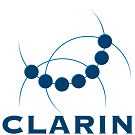Spoken language recognition: Difference between revisions
Appearance
No edit summary |
m Griet moved page Spoken Language Recognition to Spoken language recognition without leaving a redirect: Part of translatable page "Spoken Language Recognition" |
||
| (4 intermediate revisions by 2 users not shown) | |||
| Line 1: | Line 1: | ||
<languages/> | |||
<translate> | |||
<!--T:1--> | |||
Spoken language recognition is the task of recognizing in which language speech is spoken. | Spoken language recognition is the task of recognizing in which language speech is spoken. | ||
<!--T:2--> | |||
== VoxLingua107 ECAPA-TDNN Spoken Language Identification Model == | == VoxLingua107 ECAPA-TDNN Spoken Language Identification Model == | ||
This is a spoken language recognition model trained on the VoxLingua107 dataset using SpeechBrain, and includes Dutch. It can be used in a | This is a spoken language recognition model trained on the VoxLingua107 dataset using SpeechBrain, and includes Dutch. It can be used in a Python context. | ||
<!--T:3--> | |||
* [https://huggingface.co/speechbrain/lang-id-voxlingua107-ecapa Website] | * [https://huggingface.co/speechbrain/lang-id-voxlingua107-ecapa Website] | ||
</translate> | |||
Latest revision as of 16:55, 11 June 2024
Spoken language recognition is the task of recognizing in which language speech is spoken.
VoxLingua107 ECAPA-TDNN Spoken Language Identification Model
This is a spoken language recognition model trained on the VoxLingua107 dataset using SpeechBrain, and includes Dutch. It can be used in a Python context.
